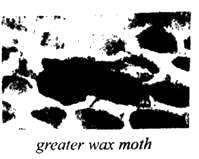When we encounter a troublesome problem,we often gather a group to brainstorm. However,substantial evidence has shown that when we generate ideas together,we fail to maximize collective intelligence.
To unearth the hidden potential in teams,we're better off shifting to a process called "brainwriting".You start by asking group members to write down what is going on in their brains separately.Next,you pool them and share them among the group without telling the authors.Then,each member evaluates them on his or her own,only after which do the team members come together to select and improve the most promising options.By developing and assessing ideas individually before choosing and expanding on them,the team can surface and advance possibilities that might not get attention otherwise.
An example of great brainwriting was in 2010 when 33 miners were trapped underground in Chile.Given the urgency of the situation,the rescue team didn't hold brainstorming sessions.Rather,they established a global brainwriting system to generate individual ideas.A 24-year-old engineer came up with a tiny plastic telephone.This specialized tool ended up becoming the only means of communicating with the miners,making it possible to save them.
Research by organizational behavior scholar Anita Woolley and her colleagues helps to explain why this method works.They find that the key to collective intelligence is balanced participation.In brainstorming meetings,it's too easy for participation to become one-sided in favor of the loudest voices.The brainwriting process ensures that all ideas are brought to the table and all voices are brought into conversation.The goal isn't to be the smartest person in the room.It's to make the room smarter.
Collective intelligence begins with individual creativity,but it doesn't end there. Individuals produce a greater volume and variety of novel ideas when they work alone. That means they not only come up with more brilliant ideas than groups but also more terrible ideas.Therefore,it takes collective judgment to find the signal in the noise and bring out the best ideas.
